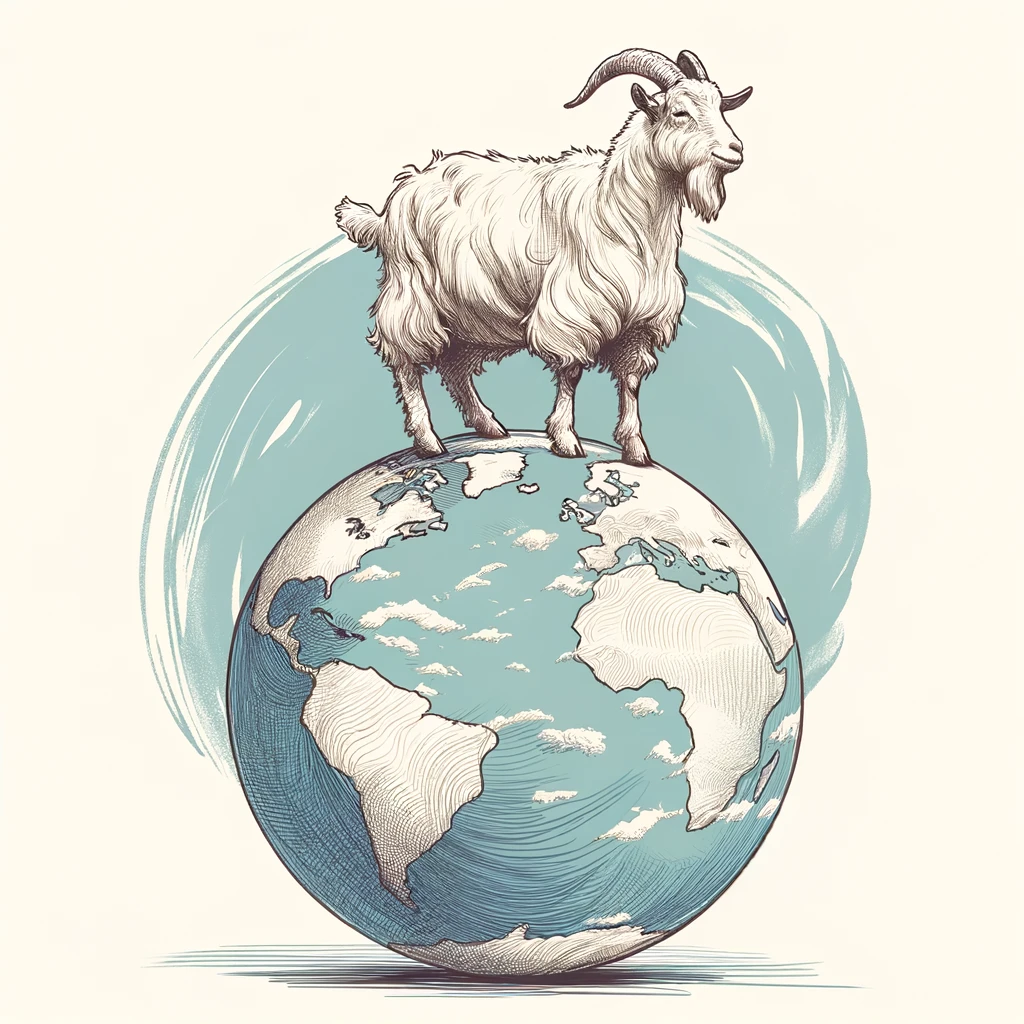Which countries have traditionally produced cashmere ?
Scotland :
Historically, cashmere was first processed by the Scots, starting in the 18th/19th century.
The hair was imported from Asia, then spun in Scotland, and finally knitted into sweaters and scarves.
The Scots were reputed to inherit their Cashmere sweaters from father to son, in the same way they handed down their tuxedos.
Scotland once had a sizeable number of cashmere sweater factories, which collapsed in the 2000s with the arrival of cheaper cashmeres made in China. Today, the main manufacturers are Johnstons of Elgin and Barrie, who produce for brands such as Hermès, Burberry and Chanel. Other well-known manufacturers have been sold to Asian investors and are now often just brands, reselling cashmere made elsewhere.
Italy :
In the second half of the 20th century, a network of Italian SMEs developed, specializing in the manufacture of knitwear and Cashmere in particular. Italians love fashion.
2 luxury brands specializing in Cashmere have emerged: Loro Piana and Cuccinelli. Still relatively unknown in France, they are highly developed on the other side of the Atlantic. They are unique in that they have developed genuine industrial know-how in Cashmere. Their positioning is very luxurious: from €1,000 to €5,000 for a cashmere sweater.
Other production units specialized in fashion and Cashmere, often family-run, gravitate around these 2 brands, charging equally high prices.
The risk with small, little-known Italian brands is the vagueness that surrounds certain origins. Some 100% Cashmere sweaters made in Italy cost €120. We’ve also been in contact with small Italian brands who wanted to buy cashmere collections from us, on condition that we replace the made in Nepal label with a made in Italy label. Of course, we refused.
China :
From the 1980s onwards, China became the world’s factory, and among other things developed expertise in Cashmere.
If there’s one area where this phenomenon of industrial concentration makes sense, it’s cashmere. Around 90% of the world’s cashmere comes from China, particularly its province of Inner Mongolia, and from Mongolia, a vast country wedged between China and Russia. Just as it’s questionable that American cotton is made into T-shirts in China and then re-exported to the USA, it’s not absurd that Asian cashmere is processed in China.
Today, most Cashmere comes from China. Brands like Bompard, Kujten, Not Shy, Scottish brands like Kinross, and many Italian brands have their products made in China.
Small countries: Nepal, Indian cashmere, …
It’s not without reason that cashmere is called Cashmere: in the 18th century, the cashmere market was held by the Cashmirians, a population of traders from Indian cashmere who specialized in silk, spices and all items exported to Europe. The Kashmiris, who bought the fiber in Tibet and Nepal, were mysterious about its origin for a long time, and Europeans believed it came from Cashmere. Hence its name.
In Indian Cashmere, there was a talent that has been preserved: that of embroidering fabrics, and in particular pashmina shawls. To this day, Cashmere shawls are still produced and exported all over the world?
Nepal, for its part, has had a special relationship with Cashmere for centuries. It was here, as well as in neighboring Tibet, that the first hairs were harvested, spun and woven into Pashmina shawls. For centuries, there has been a tradition of small weavers and knitters specializing in Cashmere. In fact, if you visit Kathmandu’s tourist district of Thamel, you’ll come across numerous stalls selling cashmere sweaters, the majority of which sell genuine cashmere. You’ll recognize them by their prices, which are very close to those in Europe.
That’s how we began the Mahogany story, when in 2004 we met a family who owned a small production unit, with which we expanded and which is still our sole source of production. Cashmere is often a matter of relationships and trust.
Cashmere made in France :
As you can see, Cashmere is not a French story. It’s Scottish, Italian and Asian.
There’s no real know-how in specialized Cashmere production in France.
It has to be said that making Cashmere items is a risky business. Between the choice of yarn, the specific knitting techniques, and the washing and embellishment that require real experience, the possibilities for error are numerous. And a kg of Cashmere on a spool isn’t worth €3 like cotton, it’s worth €140. Any error is therefore severely punished.
To interest a French manufacturer, you have to offer volumes that justify the risk. Very few brands are able to do this. Max et Moi, for example, explains that its Cashmere is made in France. This is one of the few cases we have identified.
So beware of “French brand” claims, which we are. But French brand does not mean made in France, and cases of Cashmere made in France are the exception, for the reasons we’ve explained.
At Mahogany, we’d like to offer Cashmere made in France, at least a capsule collection, even if it means charging 30% more. But we’re a somewhat confidential, slow-fashion brand. We only make small series, on a continuous basis, and we don’t throw anything away. Our concept is far removed from mass production, which is why we’ve been working for 20 years with a specialist in very small series, based in Nepal. To our knowledge, this production skill is unique in the world.
It can’t be duplicated in Europe. That’s why we haven’t managed to interest a French manufacturer.
However, if a French or European production facility reads us and understands our challenges, we’d be delighted to work with them. Just get in touch!






